Click on images to enlarge

habit (Photo: Land Protection, QDNRW)
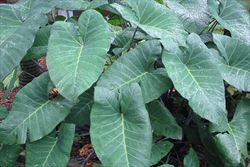
habit (Photo: Sheldon Navie)

arrow-head shaped bluish-green leaves (Photo: Sheldon Navie)
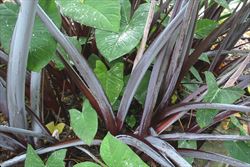
dark purplish coloured leaf stalks (Photo: Sheldon Navie)
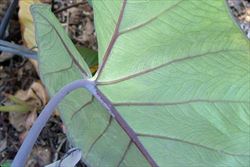
close-up of leaf underside showing leaf stalk joined to the base of the leaf (Photo: Sheldon Navie)
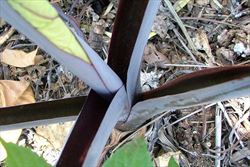
leaf sheaths at the base of the plant (Photo: Sheldon Navie)
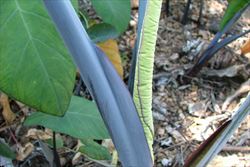
close-up of young leaf emerging from purplish-coloured leaf sheath (Photo: Sheldon Navie)
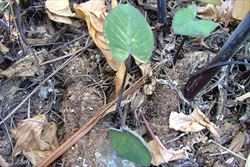
young plant growing from tuberous creeping stems (Photo: Sheldon Navie)
Scientific Name
Xanthosoma violaceum Schott
Family
Araceae
Common Names
black malanga, blue ape, blue tannia, blue taro, Chinese taro, coco yam, cocoyam, edible arrow leaf, elephant ear, primrose malanga, purple stem elephant ear, purple stem taro, purple taro, purplestem taro, Singapore taro, tannia, yautia
Origin
Native to tropical America, but its exact native range is obscure. It is thought to be native to southern Mexico, Central America (i.e. Belize, Costa Rica, Guatemala, Honduras, Nicaragua and Panama), the Caribbean (i.e. Guadeloupe and St. Lucia) and tropical South America (i.e. French Guiana).
Naturalised Distribution
Locally naturalised in south-eastern Queensland. Also naturalised on Norfolk Island and Christmas Island.
Also widely naturalised in other tropical regions of the world (i.e. in the neotropics).
Notes
Blue taro (Xanthosoma violaceum) is regarded as a minor environmental weed or "sleeper weed" in Queensland.

